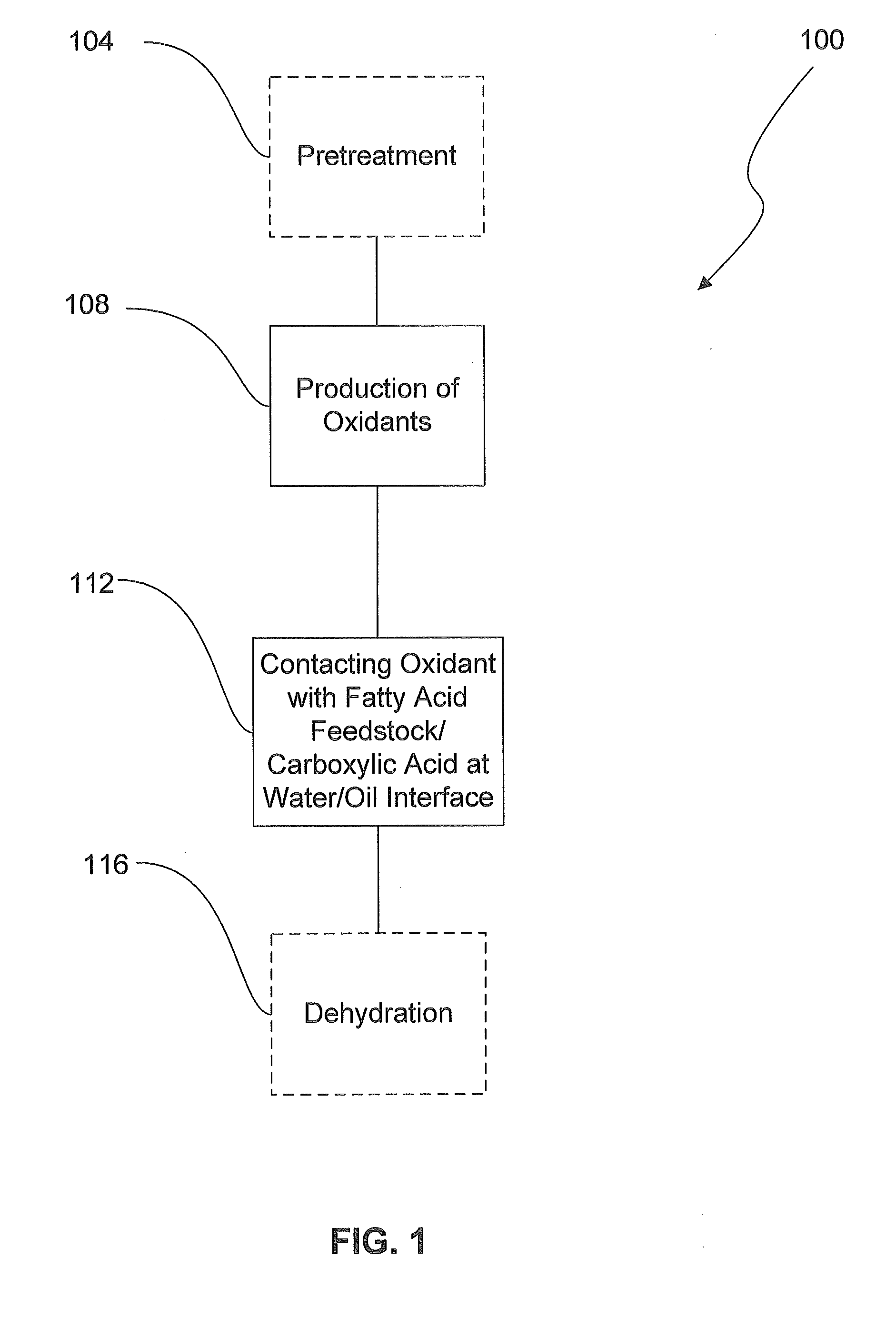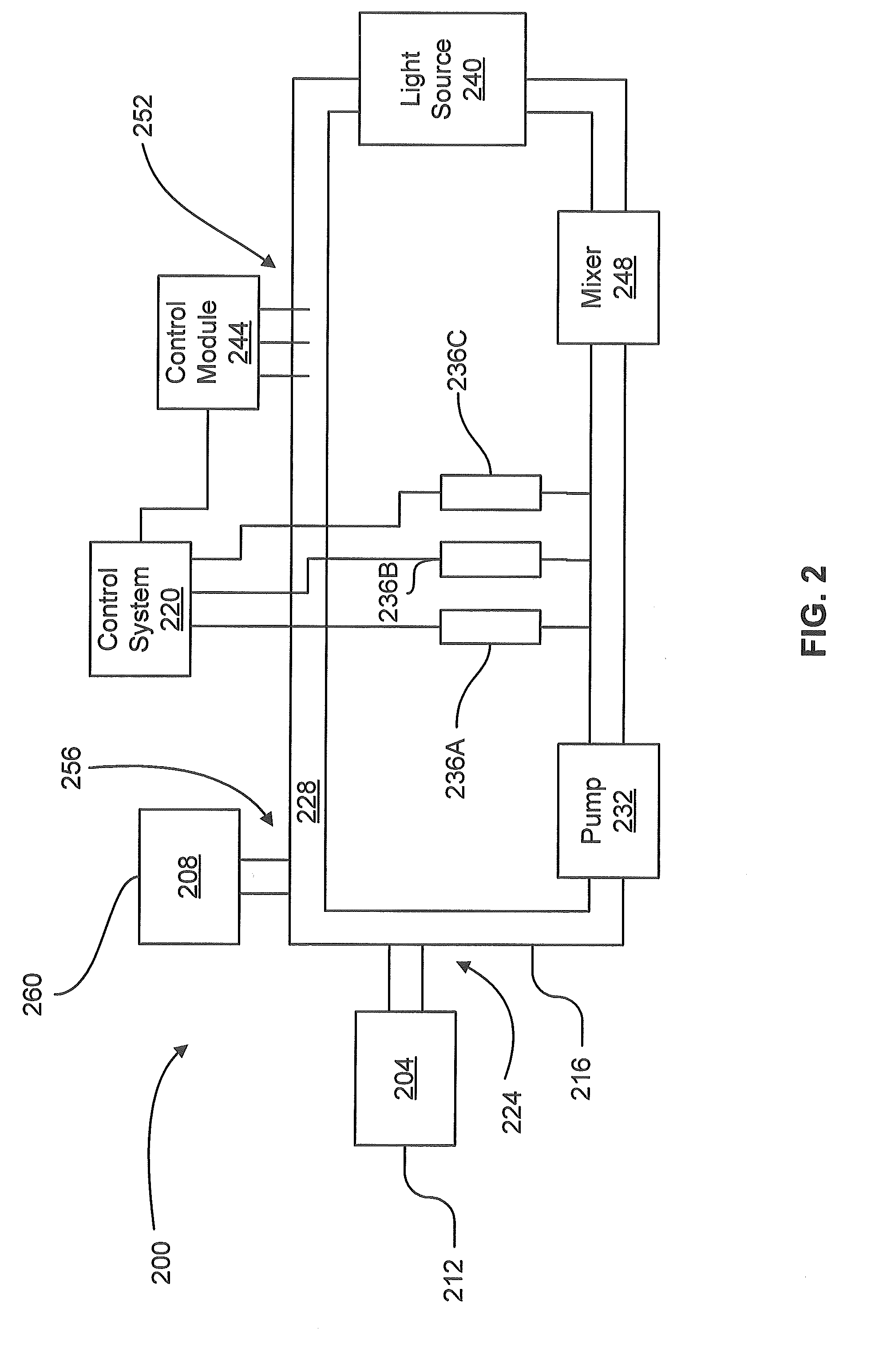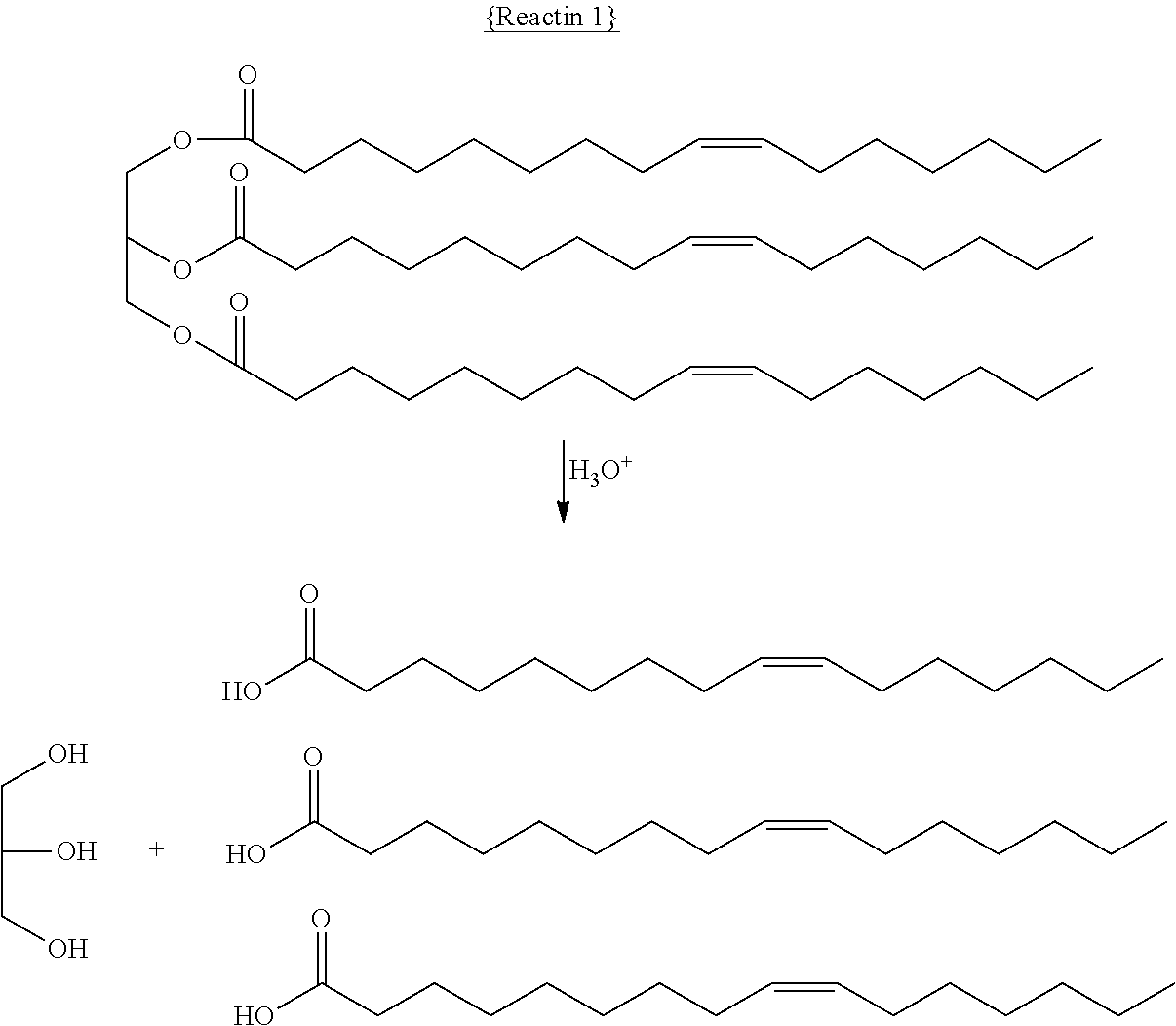Method and System For the Selective Oxidative Decarboxylation of Fatty Acids
a technology of fatty acids and oxidative decarboxylation, which is applied in the direction of fatty acid chemical modification, physical/chemical process catalysts, gas-gas reaction processes, etc., can solve the problems of many undesirable byproducts, high viscosity of biodiesel for use in aviation and spark ignition engines, and unsuitable cold weather us
- Summary
- Abstract
- Description
- Claims
- Application Information
AI Technical Summary
Benefits of technology
Problems solved by technology
Method used
Image
Examples
Embodiment Construction
[0012]Producing low viscosity renewable fuels from biologically derived fats and oils may be accomplished by the process of selective oxidative decarboxylation of fatty acid and / or triglyceride feedstocks. At a high level, an embodiment of the present disclosure decarboxylates fatty acids and triglycerides, with reagents and / or physical promoters, using oxidants at a water / oil interface. In one exemplary aspect, the decarboxylated product from such a reaction has a lower viscosity than biodiesel or its parent triglyceride. In certain embodiments, the reaction advantageously can be carried out at room temperature and pressure and has fewer unwanted byproducts than other decarboxylation techniques, such as hydrocracking.
[0013]FIG. 1 illustrates an exemplary process 100 for selective oxidative decarboxylation of fatty acids. As many types of vegetable and animal fats may be used as a feedstock and some of these feedstocks may have been previously used, in other processes such as cookin...
PUM
| Property | Measurement | Unit |
|---|---|---|
| Temperature | aaaaa | aaaaa |
| Temperature | aaaaa | aaaaa |
| Pressure | aaaaa | aaaaa |
Abstract
Description
Claims
Application Information
 Login to View More
Login to View More - R&D
- Intellectual Property
- Life Sciences
- Materials
- Tech Scout
- Unparalleled Data Quality
- Higher Quality Content
- 60% Fewer Hallucinations
Browse by: Latest US Patents, China's latest patents, Technical Efficacy Thesaurus, Application Domain, Technology Topic, Popular Technical Reports.
© 2025 PatSnap. All rights reserved.Legal|Privacy policy|Modern Slavery Act Transparency Statement|Sitemap|About US| Contact US: help@patsnap.com



